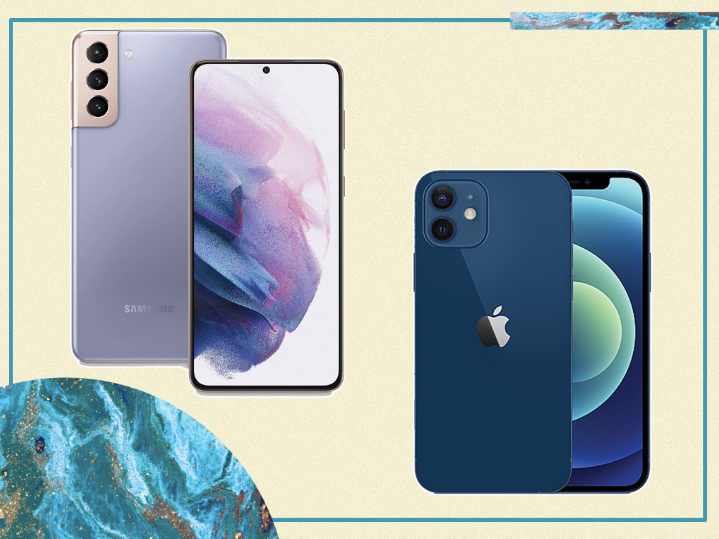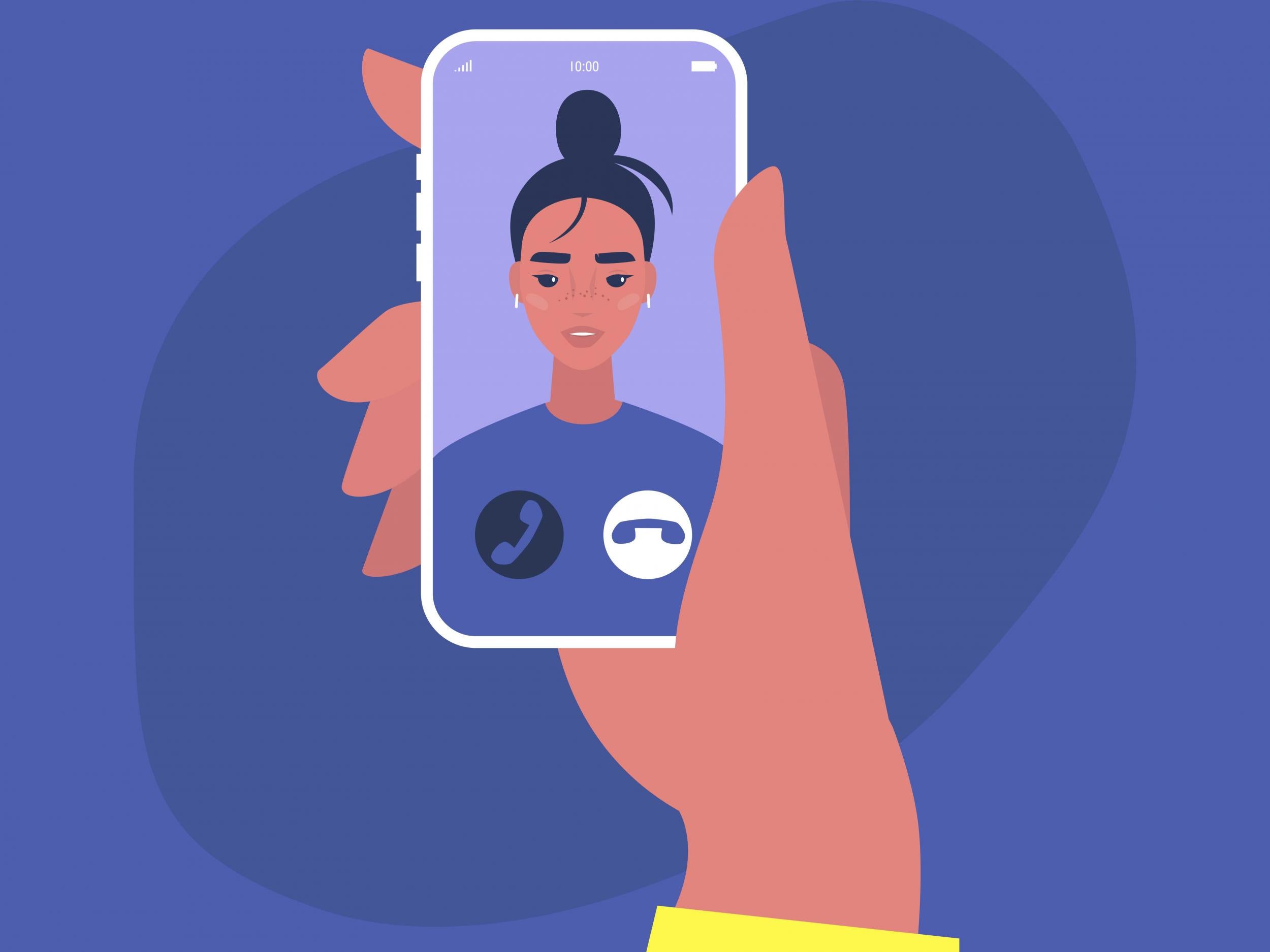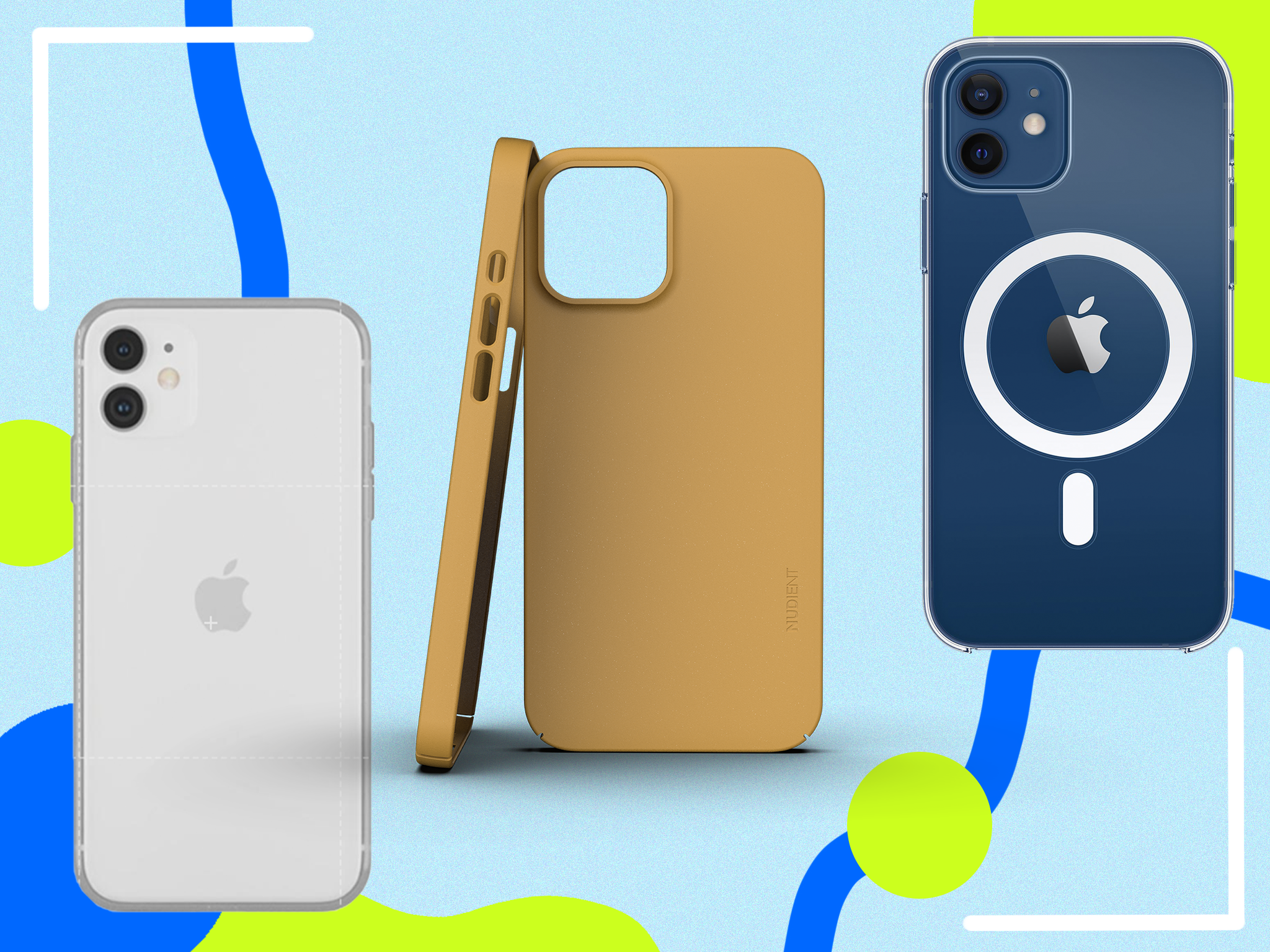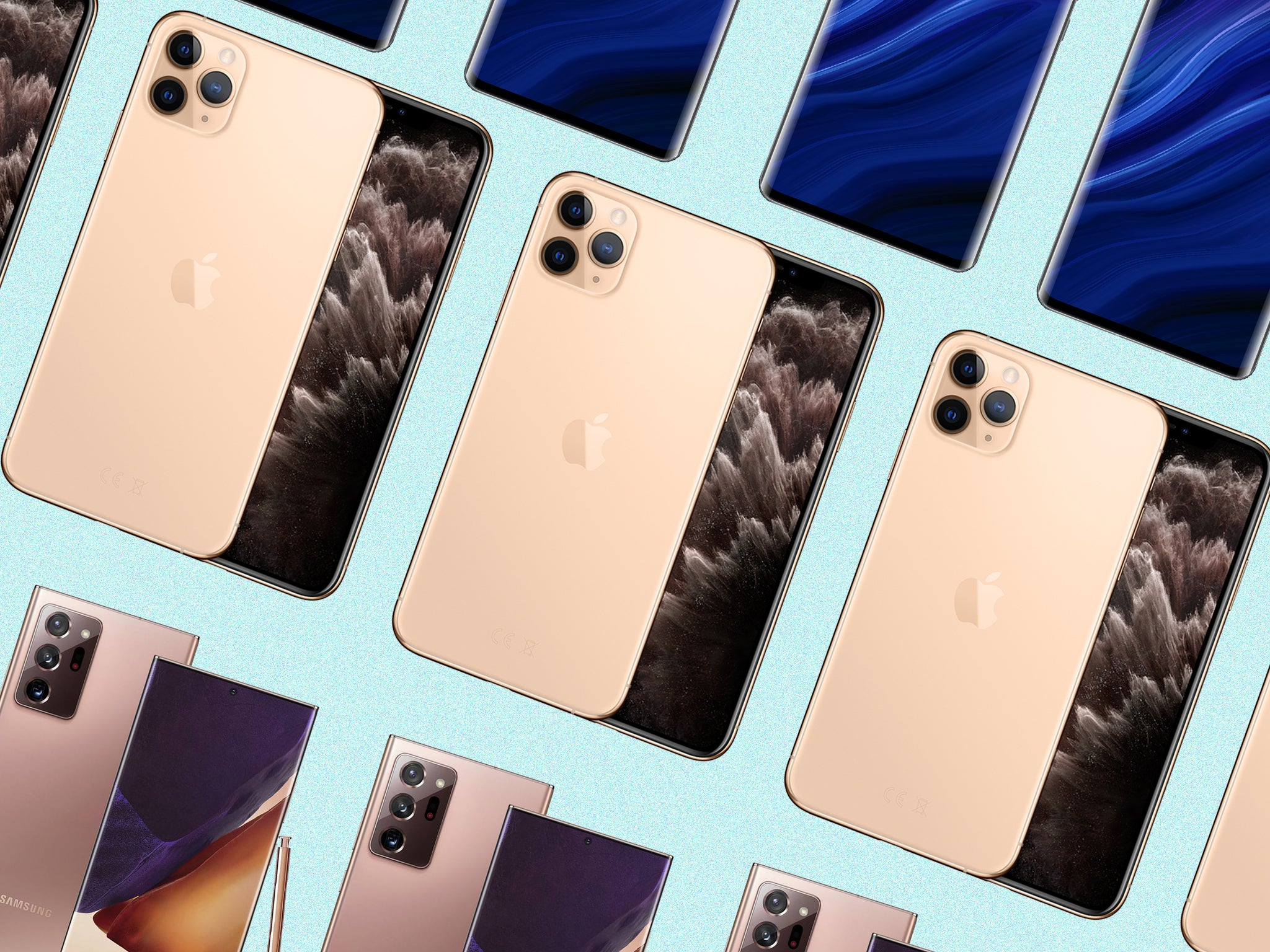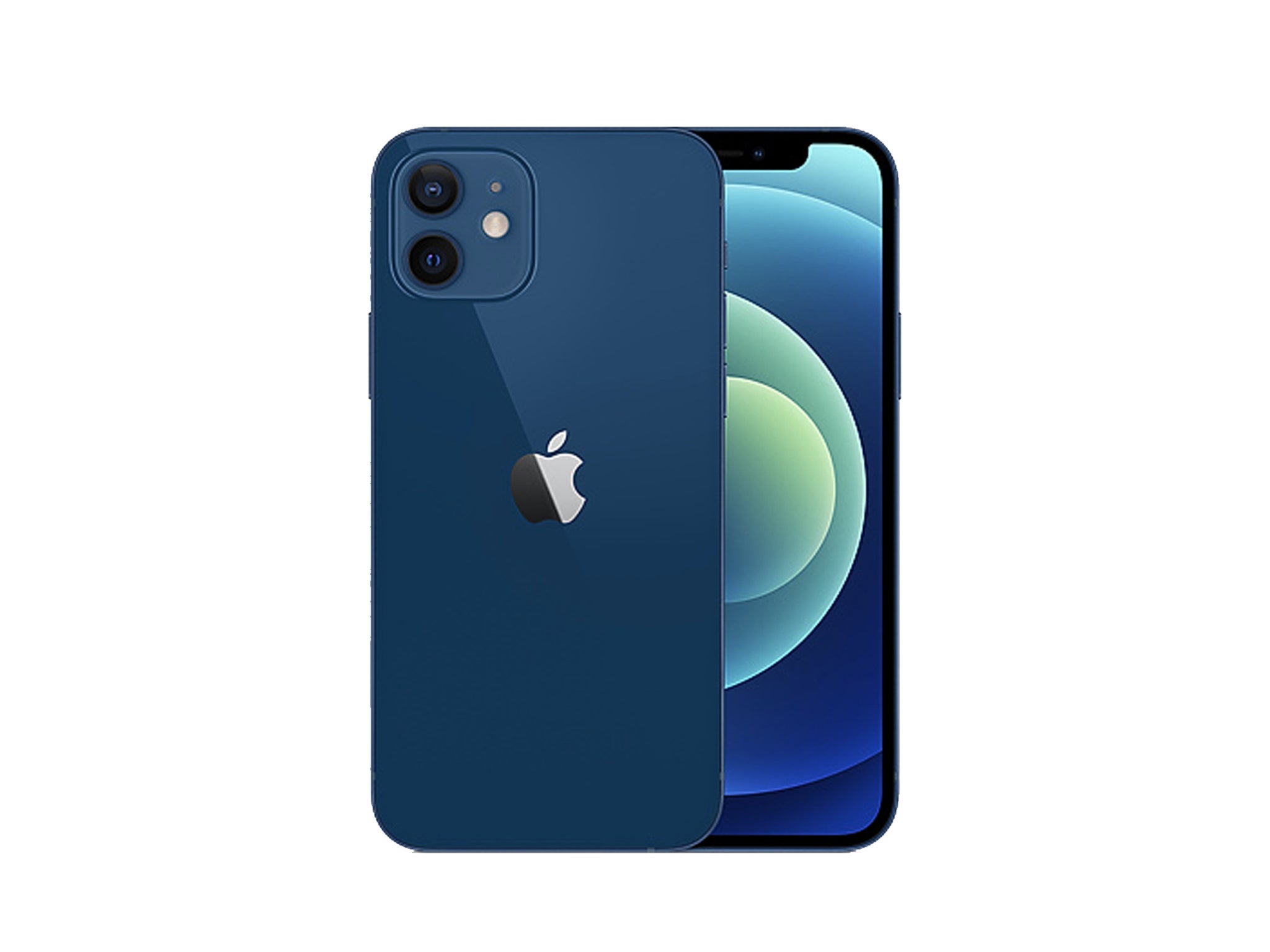Samsung Galaxy S21
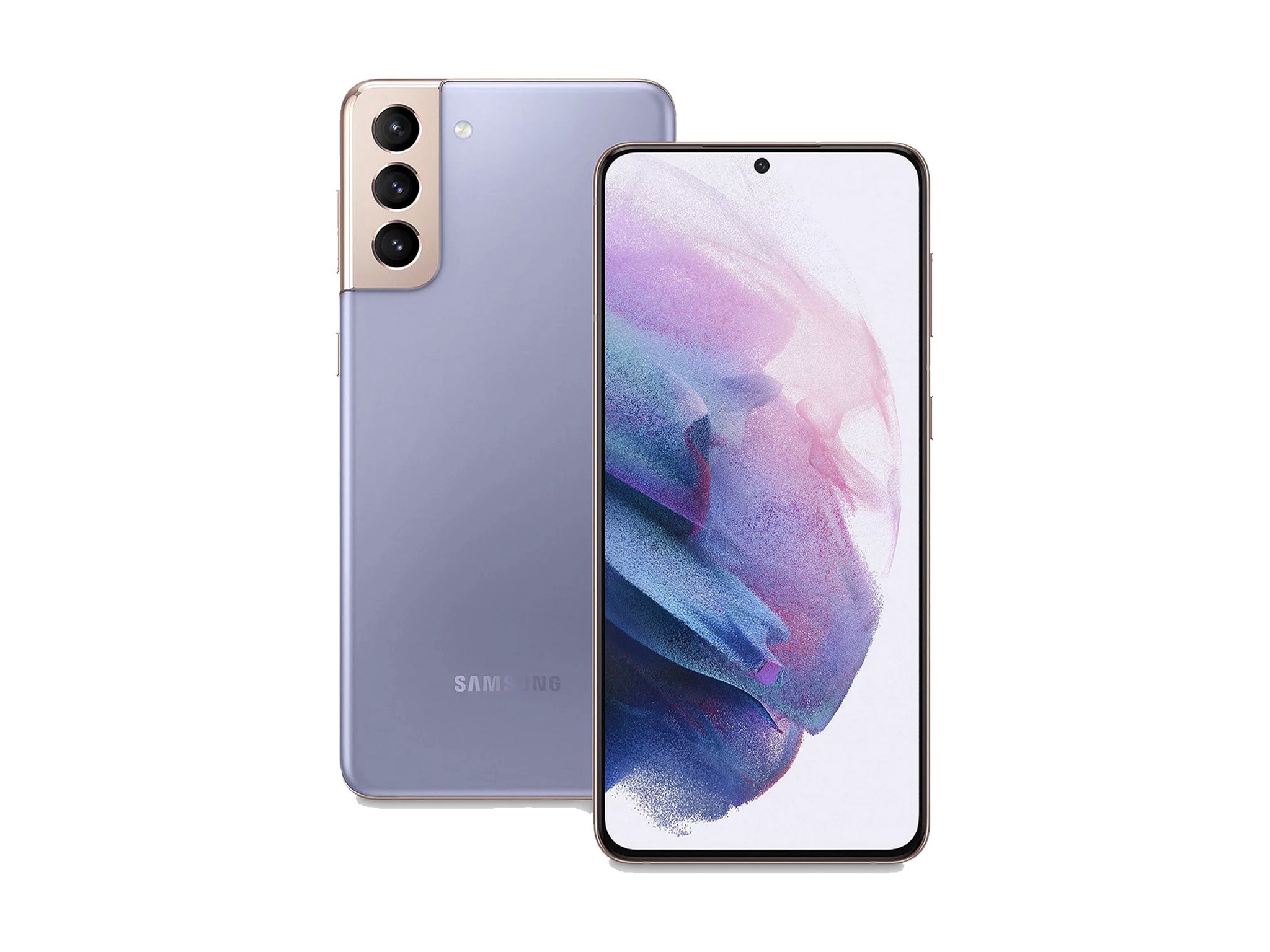
Display size: 6.2in
Display tech: OLED
Screen resolution: 421 pixels per inch
Dimensions: 151.7 x 71.2 x 7.9 mm
Weight: 169g
Security: Facial recognition, fingerprint sensor, passcode
Rear Cameras: 12MP wide, 12MP ultra-wide, 64MP telephoto
Front camera: 10MP
Operating system: Android 11
The new Samsung Galaxy S21 is certainly eye-catching thanks to a spiffy design. It comes in four colours: phantom violet, phantom grey, phantom pink and phantom white. For us, the standout shade is violet, which is a punchy and attractive shade, beautifully complemented by the subtle gold panel around the cameras
This panel sits in the corner of the phone’s back and slopes off the edge into the antenna band. It’s a distinctive look and wholly successful, we’d say. Where so many phones look near-identical, this stands out.
What’s less successful is the material finish on the back which is plastic. This does mean the handset is lightweight, but it just doesn’t feel premium. The three cameras sit in a bump which protrudes much less than on other recent Samsung phones and it feels much better for that.
The display is terrific. Where it differs from the iPhone is the refresh rate. It’s dynamic and goes as high as 120Hz. What that means is everything looks super-smooth, even scrolling through menu lists, for instance. Because it’s dynamic, if you’re doing something that doesn’t benefit from a higher refresh rate, it will scale it back, saving battery life.
Unlocking the phone is not as straightforward here as on the iPhone. The fingerprint sensor works well and is as fast as Apple’s Face ID, but facial recognition was much more hit-and-miss, only working about four-fifths of the time. Similarly, both phones have a raise-to-wake feature, so you simply lift them to turn on the display and this always worked on the iPhone but was less reliable on the Samsung.
The cameras on the phone are similar to last year’s phone, but with improved software. Still, there are three cameras, one more than the iPhone 12 manages. The first two cameras have 12MP-resolution sensors (which is the same as on the iPhone), but the third camera is a telephoto lens with a 64MP sensor behind it. For many people, this alone will put Samsung out in front.
It includes features like “space zoom”, which lets you zoom in up to 30x. The quality drops at this zoom level, of course, but it can deliver some fun results. Without this feature, the telephoto lens delivers 3x the zoom of the main lens, which is great.
There are other features, such as portrait mode which blurs the background while your subject is in pin-sharp focus. This works well but Apple’s version just has the edge, we’d say.
Other extras include “director’s view” for video. This shows what all four cameras are seeing, so you can switch between the three rear cameras easily or capture your own reaction on the front-facing snapper.
Overall, the cameras are very good here and the addition of the third rear lens is very helpful. Still, it doesn’t make for an experience that is always better than Apple’s. That said, this camera system won’t disappoint most users.
Performance is fast and smooth, with no delays or dawdling. Android isn’t always as easy to use as Apple’s iOS but Samsung’s overlay is attractive. It has decent battery life, though nightly recharges are recommended.
In some ways this phone seems like a gentle upgrade over last year’s S20 but the big drop in price, snazzy design and strong cameras make the S21 highly appealing.
Open for pre-orders now, this model is on sale from Friday 29 January. Pre-orders include free Galaxy Buds Live in-ear wireless headphones and Galaxy Smart Tag, a location tracker tag.
